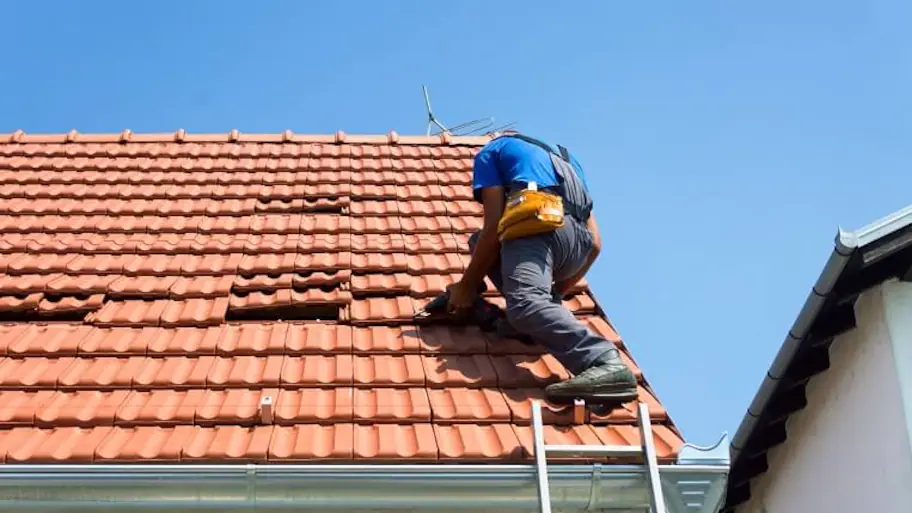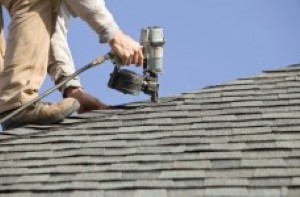Roof Repair Oahu: Quick and Affordable Roof Fixes Near You
Roof Repair Oahu: Quick and Affordable Roof Fixes Near You
Blog Article
Recognizing the Various Sorts Of Roofs: A Comprehensive Guide for Homeowners
With an array of choices-- ranging from the traditional gable to the contemporary flat-- each kind offers distinct benefits and difficulties that should align with the homeowner's details requirements and environmental considerations. As we discover the intricacies of different roofing types, it ends up being evident that one size does not fit all; the ideal selection might shock you.
Gable Roofings
Saddleback roofs, identified by their triangular form, are among one of the most popular roofing styles because of their simplicity and performance in dropping water and snow. This design features 2 sloping sides that fulfill at a ridge, permitting for reliable drainage and lessening the danger of water build-up. The steep pitch frequently related to saddleback roofs enhances their ability to take care of heavy rainfall, making them appropriate for numerous climates.
In addition to their practical advantages, saddleback roofs provide visual adaptability. They can be adapted to different building designs, from standard to modern-day homes. The design can additionally suit extra features such as dormer home windows, which boost all-natural light and ventilation in the attic space.
In addition, gable roofs give enough space for insulation, contributing to power effectiveness. Home owners can select from a selection of roofing materials, consisting of asphalt shingles, metal, and tiles, better enhancing personalization alternatives.
Despite their benefits, saddleback roofs might call for added assistance in locations susceptible to high winds or heavy snowfall. In general, the saddleback roof stays a popular option due to its mix of functionality, longevity, and aesthetic appeal.
Apartment Roofs
Level roofing systems are frequently identified for their minimal style and useful applications, particularly in commercial and commercial setups (oahu roofing). These roof coverings feature a horizontal or virtually horizontal surface area, which permits easy building and flexible area usage. While they may lack the aesthetic allure of angled roofs, level roofs provide countless advantages, specifically in urban environments where taking full advantage of area is critical
Among the key advantages of level roofing systems is their availability. House owners can utilize the roofing room for different purposes, such as rooftop gardens, terraces, or solar panel installments. Furthermore, level roofs are normally extra cost-effective to keep and set up contrasted to their sloped equivalents, as they require fewer materials and labor.
Common materials used for level roofs include built-up roof (BUR), modified asphalt, and single-ply membranes, each offering unique benefits. On the whole, flat roofing systems serve as a adaptable and useful option for numerous property owners and companies alike.
Hip Roofs
Hip roofs are identified by their sloped sides that converge on top, forming a ridge. This design is distinctive from saddleback roofs, as all 4 sides of a hip roof covering incline downwards towards the walls, offering a more stable framework. The angle of the inclines can differ, enabling flexibility in architectural aesthetics and functionality.
One of the primary advantages of hip roofs is their ability to stand up to hefty winds and unfavorable weather problems. The sloped surfaces allow better water drainage, decreasing the risk of leaks and water damages. In addition, hip roofing systems supply increased attic room area, which can be made use of for storage space and even converted into habitable locations.
Nevertheless, building a hip roofing can be a lot more pricey and complex than less complex roofing types, such as gable roofing systems. The added material and labor associated with developing the slopes and ensuring appropriate structural honesty can bring about greater expenses. In spite of these drawbacks, many home owners prefer hip roof coverings for their sturdiness, aesthetic allure, and possibility for energy performance.
Mansard Roof Coverings
Mansard roofs, frequently recognized by their distinct four-sided style, feature 2 slopes on each side, with the lower incline being steeper than the top. This architectural design, stemming from France in the 17th century, is not just visually enticing however practical, as it makes the most of the usable space in the top floorings of a building. The high reduced incline allows for more headroom, making it an excellent choice for attic rooms or loft spaces, which can be exchanged living spaces.
Mansard roofings are defined by their flexibility, accommodating different architectural styles, from traditional to contemporary. They can be built with different materials, including asphalt roof shingles, slate, or steel, supplying house owners with a series of options to suit their spending plans and choices. In addition, the style enables the combination of dormer windows, enhancing all-natural light and air flow in the top levels.
However, it is necessary to think about the possible drawbacks. Mansard roof coverings may require more upkeep as a result of the intricacy of their design, and their high slopes can be challenging for snow and rain runoff. Overall, mansard roofings incorporate beauty with usefulness, making them a preferred choice amongst house owners looking for distinct building functions.
Lost Roofing Systems
As home owners increasingly seek simplicity and capability in their building styles, lost roof coverings have become a prominent choice. Identified by a single sloping plane, a shed roofing presents a minimalist aesthetic that complements numerous home designs, from modern to rustic.
One of the key advantages of a shed roof covering is its simple building and construction, which frequently translates to lower labor and material costs. This design permits reliable water drainage, minimizing the risk of leakages and water damages. In addition, the upright incline gives sufficient room for skylights, improving all-natural light within the interior.
Shed roofs additionally supply adaptability in terms of use. They can be successfully integrated right into enhancements, garages, or outside structures like sheds and structures. Furthermore, this roofing design can suit different roofing materials, including metal, asphalt tiles, and even environment-friendly roofings, lining up with green campaigns.
Nonetheless, it is necessary to think about regional climate problems, as heavy snow loads might necessitate changes to the roof covering's angle or structure. Overall, lost content roofing systems provide a functional and visually pleasing choice for homeowners wanting to maximize performance without compromising style.
Conclusion


Gable roofing systems, identified by their triangular form, are amongst the most prominent roofing styles due to moved here their simpleness and effectiveness in losing water and snow. oahu roofing. The high pitch frequently associated with gable roof Related Site coverings enhances their capacity to handle hefty rainfall, making them appropriate for different environments
While they may lack the visual allure of pitched roofings, level roof coverings offer many advantages, specifically in metropolitan settings where maximizing space is crucial.

Report this page